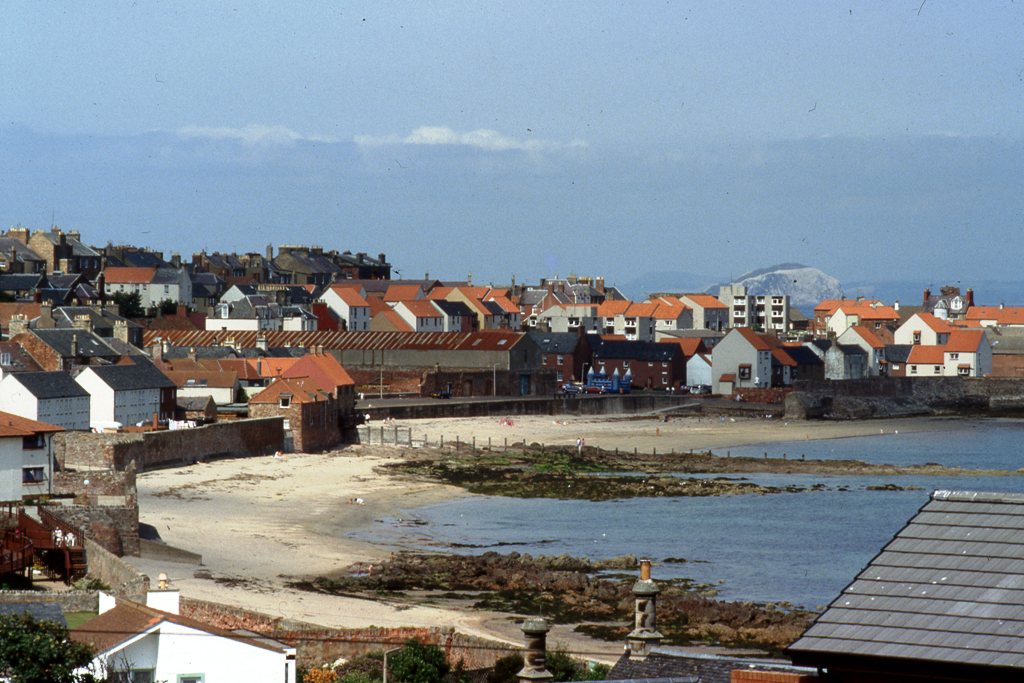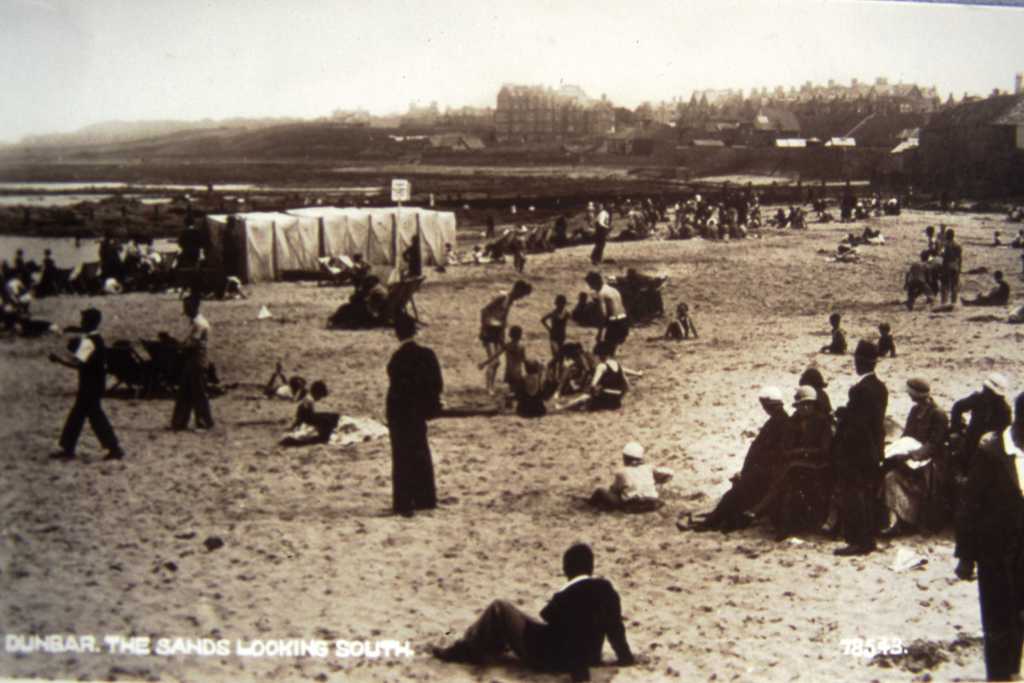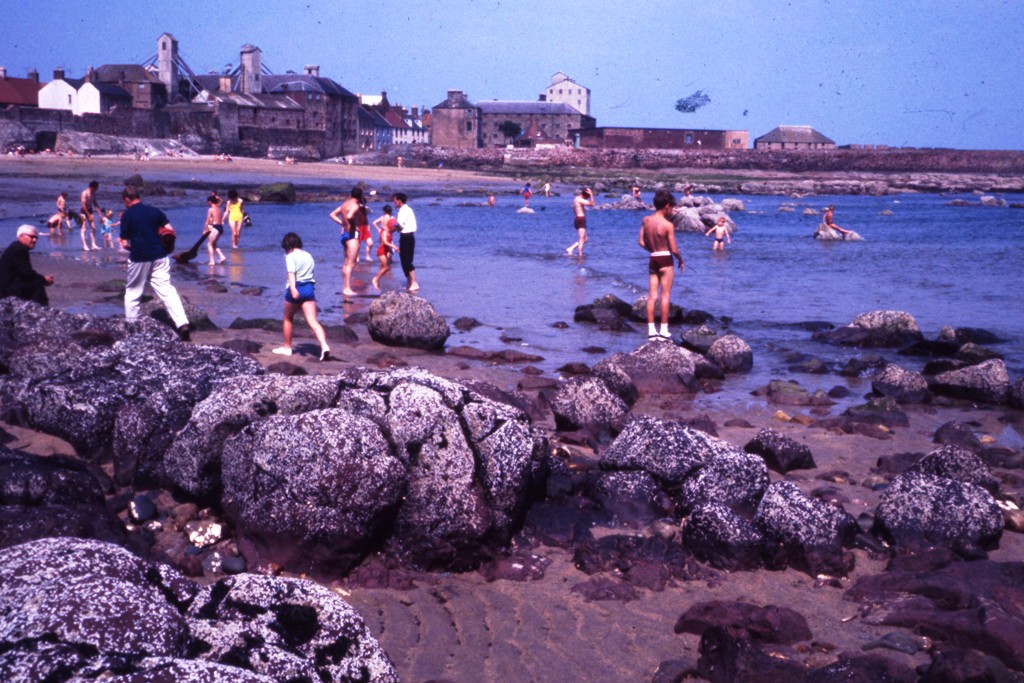This month features images are from our recently scanned slide collection which has been donated to the society over the past 27 years. The scanning was carried out by our member Anthony Jeffrey and we are very grateful to him for all the time he has taken to do this. The theme is the East Beach at different times. The annotated text is partly based on notes provided by Pauline Smeed and Jim Herring added text and links.
In the first photo above, the beach is very active and this may be a weekend photo or a summer holiday depiction. In the middle of the photo, you can see the changing tents for ladies and gents. You can read more on bathing tents (and bathing machines!) in the early 1900s here. The photo presents and interesting mix of people on the beach, from the rather prim looking women and men at the bottom right, in what looks like clothes they might wear to church on a Sunday i.e. dresses and hats for the women and suits and hats for the men. In the middle of the photo, there is a family in swimming costumes and maybe having a picnic. There are also a few deckchairs on the beach, probably hired for the day from the local council. At the far end of the photo, you can see the imposing and very grand looking Roxburghe Hotel, with the roof of the Dunbar Golf Club House showing below it. Bowmont is to the right of the hotel and Roxburghe Park on the left. You can see a good photo of the Roxburghe hotel and you can zoom in to get more detail here.
The second photo (best enlarged) takes us forward perhaps 40 years to c1960s, with Dunbar and its beach looking at its best with a clear blue sky reflected in the calm looking sea. This is a different view from the photo above, as we are now looking from the south. One of the key differences between this photo and a similar one taken today are the buildings in the background. On far right is Macarthur’s Store pre development and there is a fascinating history of the store, also known as Spott’s Girnel or Spott’s Granary, (first noted in 1658) on this Canmore site (good photos). To the left of the store, you can see the tall white upper part of Bernard’s Maltings, now replaced by The Granary flats. Also, in the foreground, the gable end of Cromwell House can be seen, with the Old Ship Inn and neighbouring 18th century properties. On the left the two towers of the Miller & Dudgeon Maltings can be seen. The white buildings in the top left corner are still standing today, surrounded by more modern homes.
The third photo is looking south over the East Beach towards the Parish Church. The absence of the roof on the church dates the photograph to post 1987. On the 3rd January 1987, the church caught fire and was partially destroyed. You can see vivid photos of the fire, with an interesting interview with Ian Hastie here. The beach itself is quiet, with a sprinkling of seaweed near the wall and the water is glistening in the sunshine. The long roof on the right of the photo was a building owned by the local council.

The final photo is also taken from the south and looking across the two beaches. The Bass Rock can be seen in the enlarged photo, so it may have been taken from Roxburghe Park. Also of interest, is the bouncy castle in the centre of the photo. This was part of Johnny’s Amusements next to The Palace of Pleasure, now demolished. The Palace of Pleasure was featured on this site in 2019 with the advert below. Note the Monkey House which would not be allowed today.




You must be logged in to post a comment.